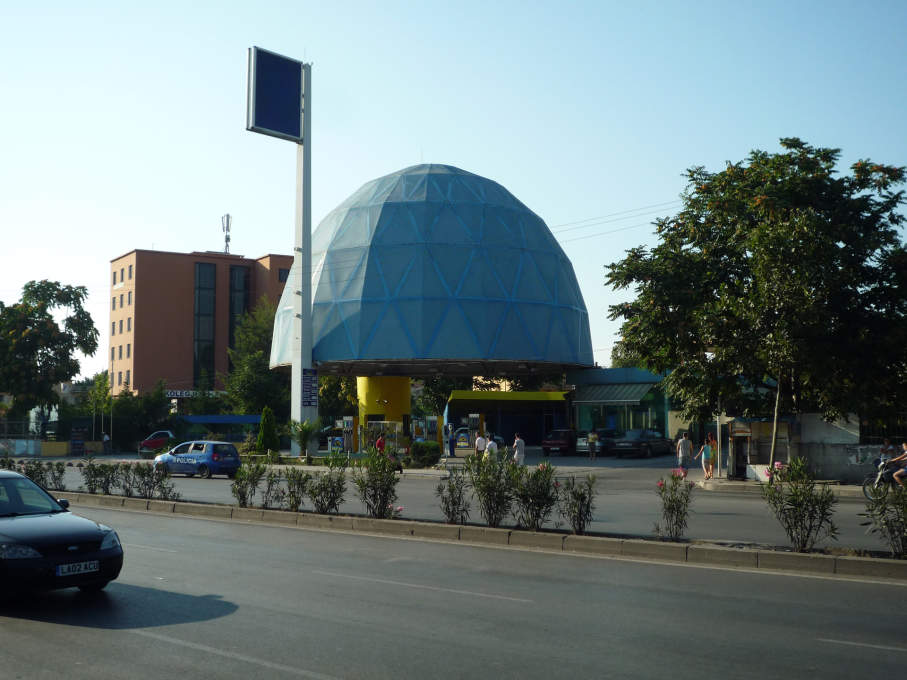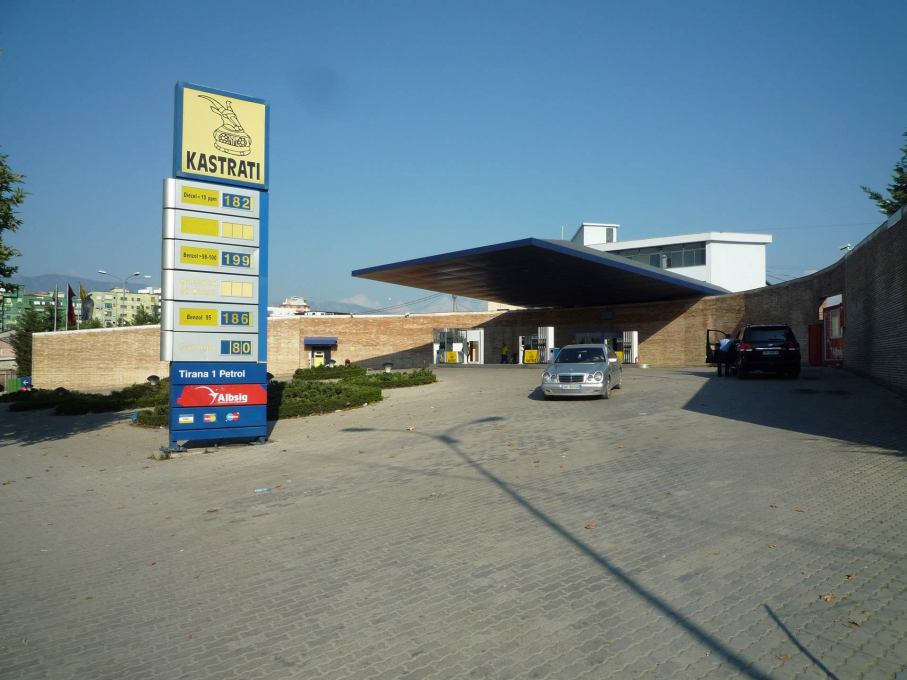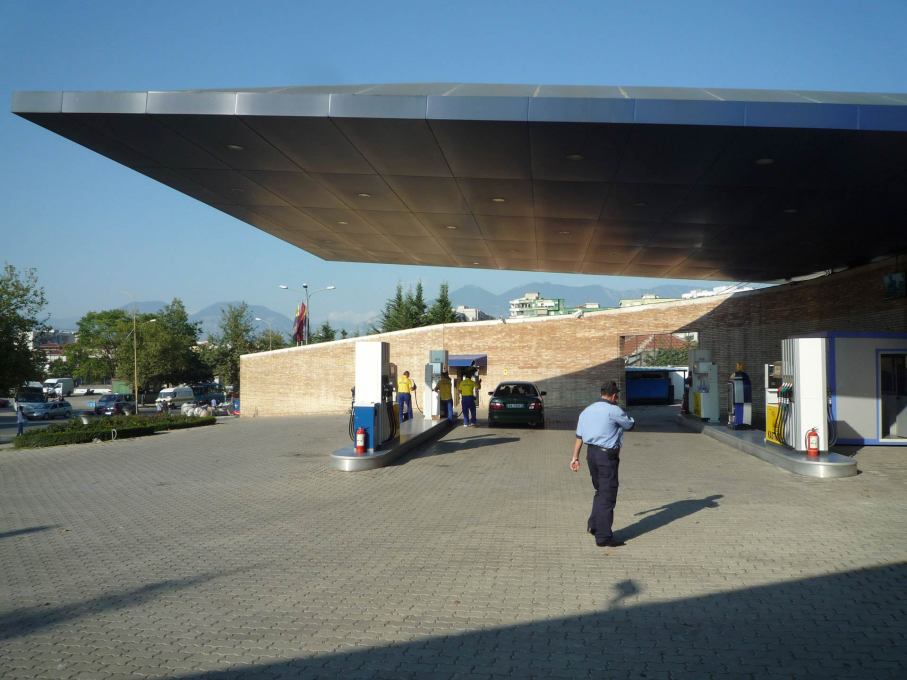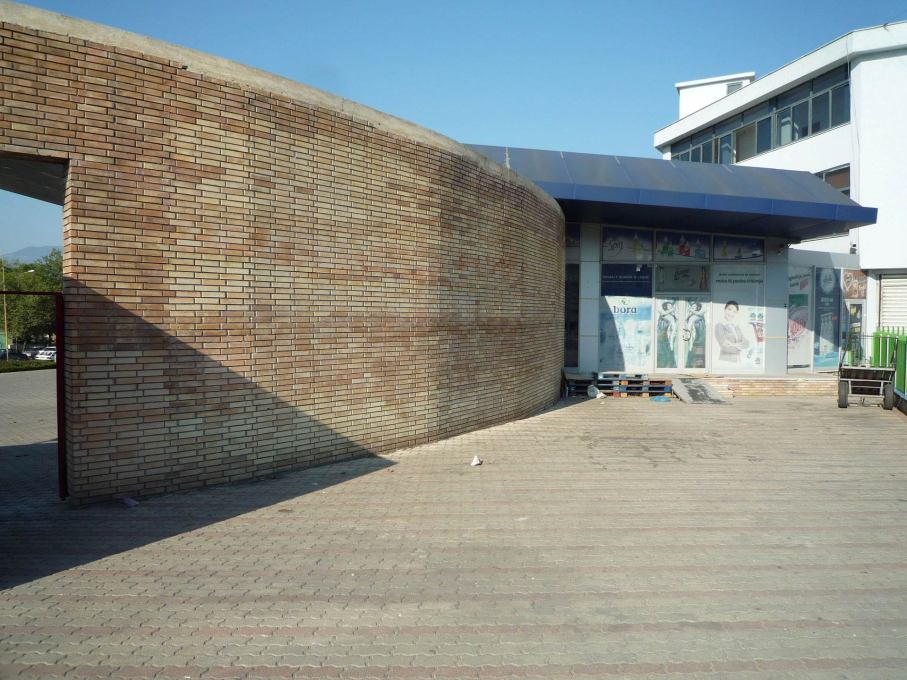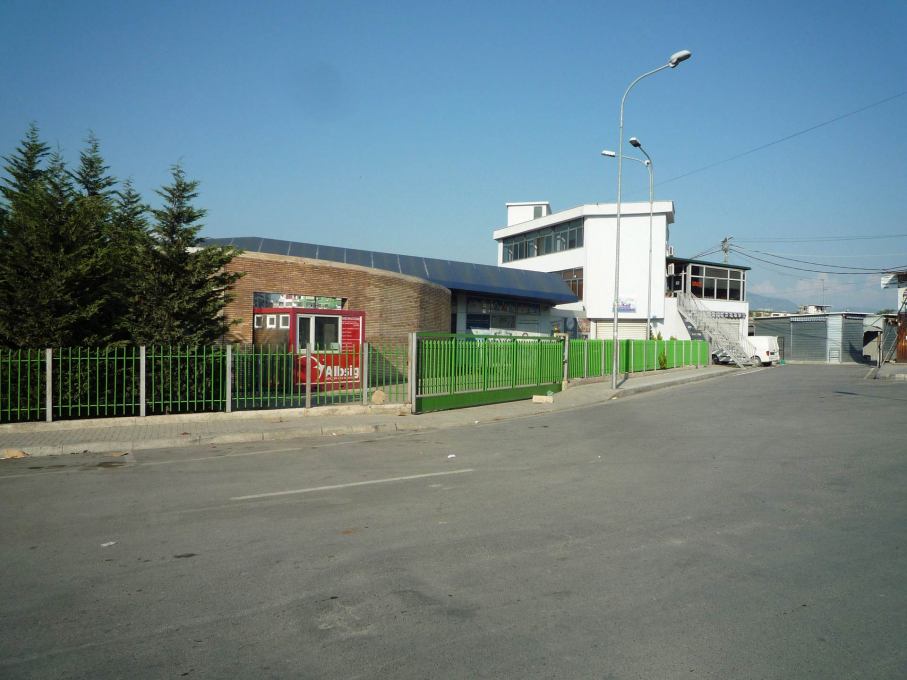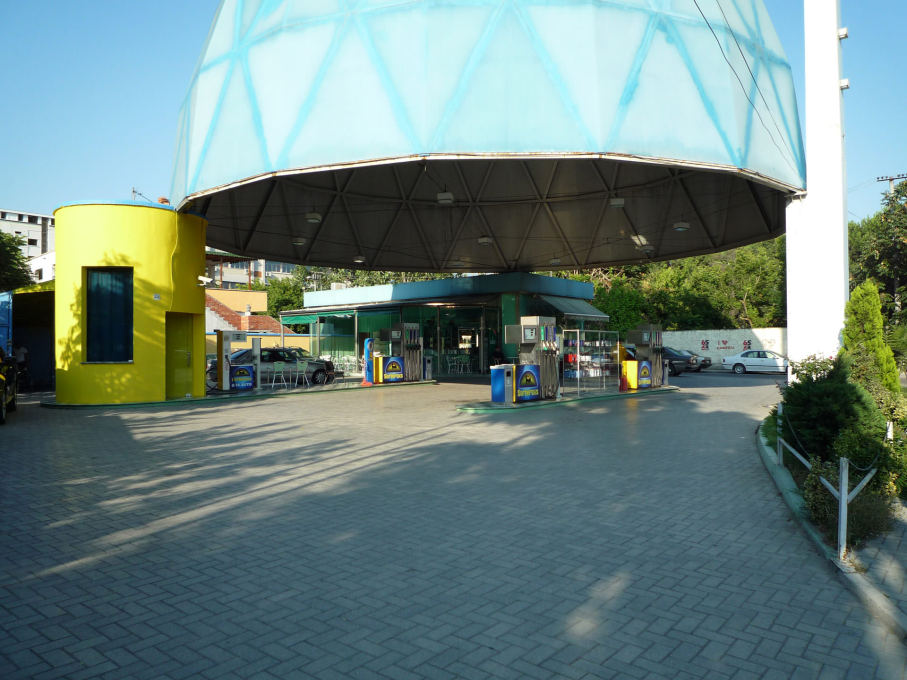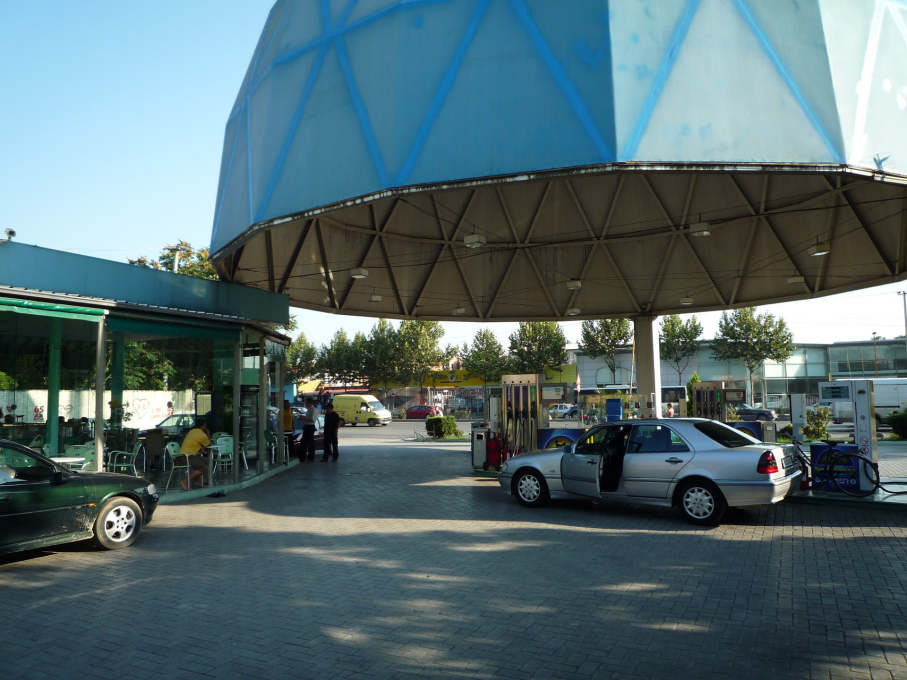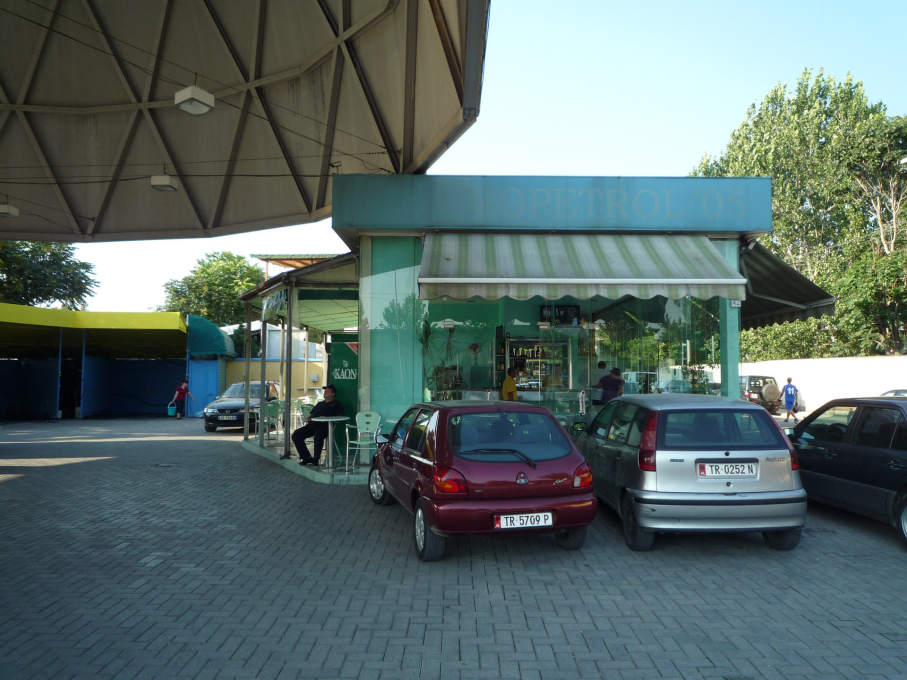The chance to build a petrol station is a rare opportunity for an architecture firm, since the handful of multinationals controlling the market tend to prefer blanketing the globe with their standard corporate readymades. Hence it was quite a treat for the Belgian office 51N4E to be asked to design two of them in Tirana. Andreas Ruby took a road trip to investigate.
Albania is one of the least likely places in Europe where you would expect to come across contemporary architecture. As a totalitarian regime in the mould of Stalinism, and later Maoism, Albania existed in complete isolation during the cold war and was sealed tight even against its neighbouring Eastern block countries. When the regime collapsed in 1991, the country stumbled straight into a neoliberal economy and it wasn’t long before the ensuing culture shock was reflected in the transformation of urban developments.
Private vs. Collective
After decades of forced collectivism, people understandably jumped on the bandwagon of late-capitalism. Private ownership became de rigeur: my house, my garden, my car. In contrast, the idea of public space was inexorably contaminated by memories of military parades and choreographed party rallies. As a result, over the past twenty years most new urban developments in Albania focus almost entirely on satisfying the spatial needs of private investors – and their mantra is: the only good space is sellable space. Nevertheless, below the radar of this raw real estate rationale, Tirana has still managed to develop a great culture of public space, one that is embedded in the everyday activities of its citizens and the city’s infectious street life.
In view of commercial urban inhibitions, 51N4E saw their petrol station designs as opportunities to generate public space as contraband, a facility that helps to fuel the city as well as its automobiles. In both designs, the architects have realised this strategy in two quite different ways.
The Kastrati Station
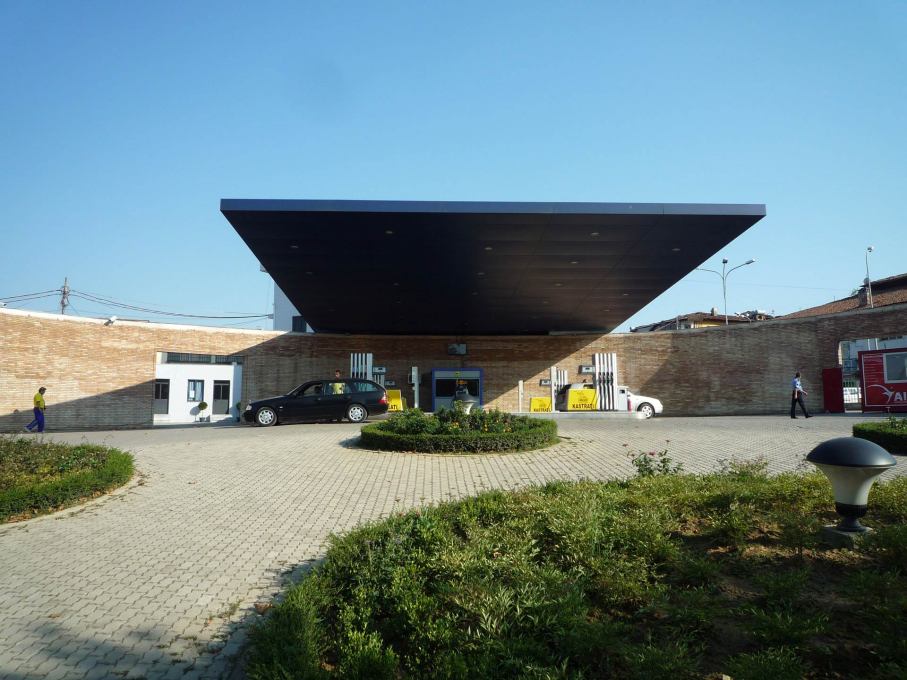
In the Kastrati filling station (Kastrati being a common Albanian surname), completed 2010, 51N4E have pulled the street space over onto the plot of the filling station, much as you might drag the carpet of your living room into the hallway. A long wall of yellowish bricks leads from the road in a generous concave curve deep into the plot and out again to the road on the other side. Where the wall meets the far end of the plot, a massive blue steel roof cantilevers breathtakingly back towards the street, sheltering the petrol pumps placed underneath.
The resulting set-up is a careful blend of unique spatial scenarios: the monumental drive-in curve recalls the carriage drop-off point of a baroque castle, the roof evokes the heroic prowess of modernist engineering and the long brick wall (a material rarely used in Tirana) is reminiscent if Dutch town squares.
Indeed the Kastrati station gives less of a feeling that you are at a petrol station souped up with some special spatial effects, than one of being in an urban square where you can also happen to buy petrol. This scenario is enhanced by an inviting opening in the wall, which leads to an informal market at the back of the block. A conventional petrol station would suck you in from the street and spit you out again into the traffic after refuelling, but 51N4E’s Kastrati station makes you actually curious to explore the urban fabric hidden behind.
The Europetrol Station
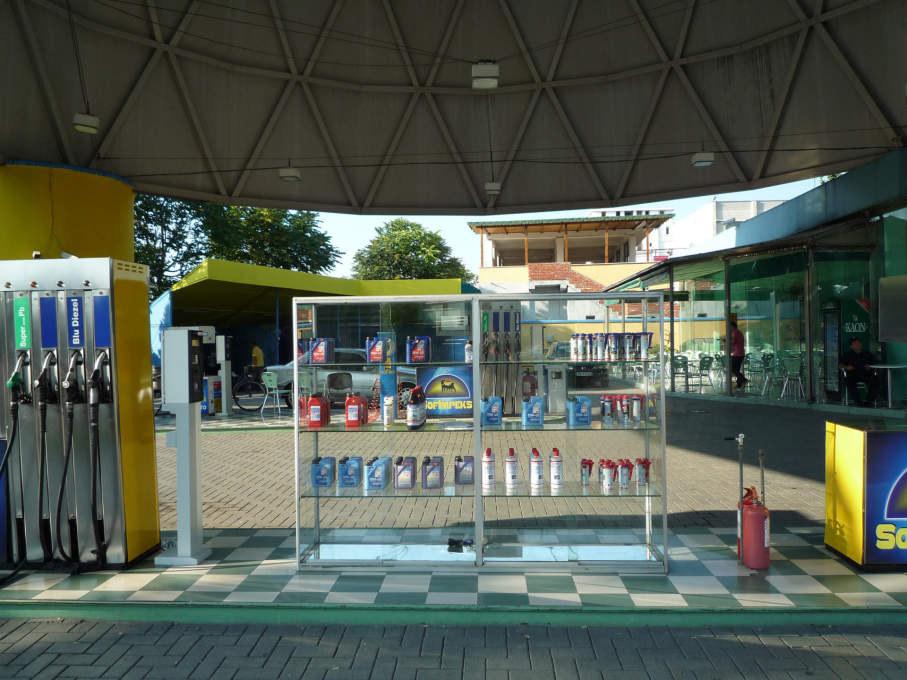
The same kind of urban reasoning drives the design of 51N4E’s Europetrol station (2005-2006) situated along the biggest approach road to Tirana from the airport. Held by three supports, a monumental steel cupola floats above a small clutch of petrol pumps. Standing beneath it, you get an intense sensation of being sheltered, a feeling you might expect from a chapel perhaps, but not something as banal as a petrol station. It is a calculated collision of scales and atmospheres indicating that, once again, this project is about transforming a functional environment to provide asylum for a public space that otherwise would have no place in the city.
Europetrol’s layout also clearly departs from conventional filling stations. It is situated on a corner site and the small service and café building is located against the small perpendicular road, providing an actual street façade – petrol station buildings are almost always situated away from the road – and a small car wash structure marks the far end of the plot. Together, they frame a small square crowned and accentuated by the tall, hovering cupola that puts the finishing touch to the estrangement from the normal iconography of this program. As you drive by, the structure clearly looks nothing like a petrol station, rather, an inconspicuous monument to public space, which happens to contain a filling station as well.
– Andreas Ruby is the co-founder of Ruby Press specialising in books on architecture, art and other cultural practices.




